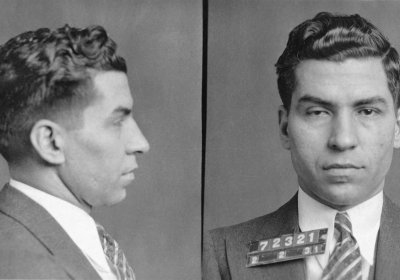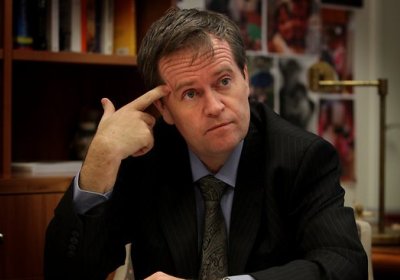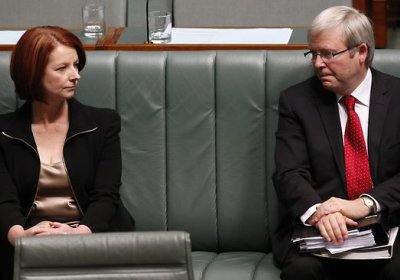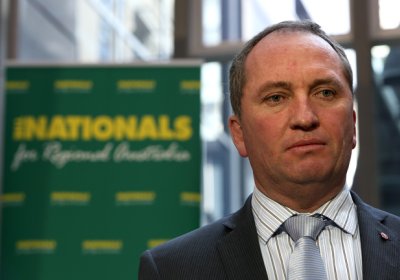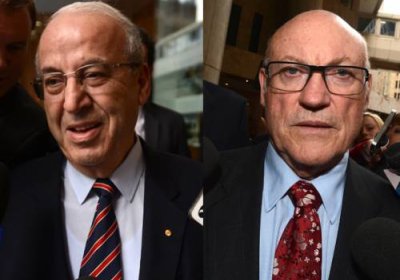The Grattan Institute and the Productivity Commission both released reports on November 22 into the affect an ageing population will have on Australia’s economy.
The Grattan Institute proposed that the pension age should be raised to 70, owner-occupiers should not be exempted from the Age Pension asset tests — meaning people could be forced to sell their home when they retire — and GST should be applied to fresh food.
The Productivity Commission suggests access to the Age Pension and retirement should be linked to life expectancy — to continue rising as people live longer.
John Rainford
The formation of the Labor Party — created as part of a global movement to form mass workers’ parties in the 1890’s — differed markedly from the formation of social democratic parties in mainland Europe. The tendency in these countries was for the formation of workers’ political parties to precede the formation of a mass union movement which the parties then encouraged.
World War II was fought to resist fascist aggression; the Vietnam War was an imperial war of aggression fought chiefly by France and the US, alongside allies that included Australia. The wars have been well documented, but rarely will you find an account of how they were instrumental in rejuvenating and then expanding the heroin trade.
The ANZ announced a full-year cash profit of $6.5 billion on October 29.
Two days later, the NAB posted a profit that was not quite so big. It had only managed $5.94 billion in the year to September.
Banks make their profits in a number of ways. One is a sort of bankers’ version of two-up, betting on foreign exchange rates. This is the world’s largest market.
Reserve Bank of Australia figures for April put the average Australian foreign exchange turnover at US$181.7 billion a day.
With political advantage from a national celebration of the centenary of World War I in mind, the Julia Gillard government last year allocated an initial $83.5 million towards the “Anzac Centenary”.
Through a local grants program, up to $125,000 is available for each federal MP to fund suitable projects in their electorates. But unfortunately for Labor, the project is now headed by Tony Abbott, who has appointed himself head of the Centenary. Stand by for a broadside of jingoism and a celebration of empire.
In the ballot to elect the Australian Labor Party leader that concluded on October 9, 74% of the membership voted — 30,426 of the party’s 43,823 members — apparently energised by the novel prospect of having a say in the leadership.
Although the two aspirants, Bill Shorten and Anthony Albanese, are leaders of the party’s right and left factions respectively, both avoided controversy by saying next to nothing about policy.
When the global financial crisis (GFC) unfolded in 2008, the unemployment rate for 15 to 19-year-olds looking for full-time work in Australia increased from 15% to 25%. It has remained at this level ever since.
In July, it stood at 25.5%. However, in the 10 areas listed by the Department of Human Services as the most disadvantaged in the country, the youth unemployment rate is more than 40%.
After the ALP caucus deposed Julia Gillard in June this year, her recycled replacement, Kevin Rudd, thanked them by making sure that they wouldn’t get the chance to sack him a second time.
In what many of them saw as an ambush, he proposed to a surprised caucus that, in future, Labor leaders should be elected by ballot of both the caucus and the party’s rank-and-file members. It would not be open to caucus to depose any leader again unless 75% of them decided that he or she had “brought the party into disrepute.”
The land around Gwabegar, in north-western NSW, is not known for its fertile soil. Locals call it “mongrel” or “heartbreak” country.
Fairfax Media quoted a farmer from nearby saying: “This is scalded country. It could not support the number of animals that would be needed to make a return on investment.”
If the Pilliga scrub is not much good for farming, why did Barnaby Joyce, the National Party Senator now standing for the seat of New England, and his wife Natalie pay $572,000 for two blocks of land there in the space of 18 months between 2006 and 2008?
The Australian Council of Trade Unions emailed 90,000 union members on August 21, urging them to “go hard against Abbott” in the last two-and-a-half weeks of the election campaign.
They will have to in South Australia if the Newspoll released on the same day is accurate.
A breakdown of voting intentions by state showed a 7.2 percentage point swing against Labor in South Australia compared with the 2010 election result.
Before the 2007 federal election, Julia Gillard turned her attention to what the Labor Party needed to do to win back government in a book called Coming to the Party.
She said reforming Labor’s factional system was high on the agenda because, “we are no longer talking about factionalism, we are talking about fractionalism – a Party in which almost anyone with a pocket full of votes, often procured in dubious circumstances, believes it is their right to demand something from the Party in return.”
In recent years, there has been the emergence of a career path in the Labor Party that runs from the union movement to political office. Then, after office, to lobbyist and company director.
Of the 23 key lobbyists in the five mainland states in 2010, 17 had connections to the Labor Party. In a reflection of cross-party unity in NSW, 134 of the 272 officially registered individual lobbyists are former MPs or ministerial staffers.
- Previous page
- Page 13
- Next page


